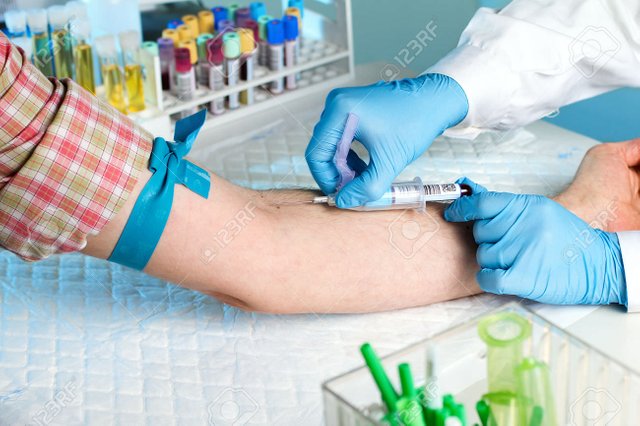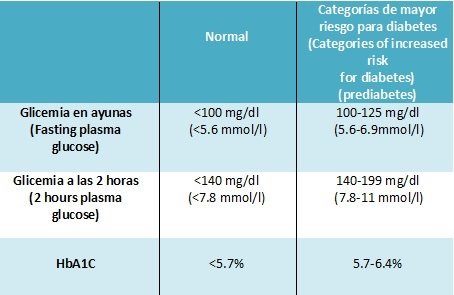¿Cómo se diagnostica la resistencia a la insulina?/How is insulin resistance diagnosed?
Continuando la secuencia de los post anteriores en este hablaremos de cómo se diagnostica la resistencia a la insulina/ Continuing the sequence of the previous post in this we will talk about how insulin resistance is diagnosed.
A todas aquellas personas con los factores de riesgo que mencionamos anteriormente (historia familiar de Diabetes, malos hábitos de alimentación, sedentarismo, sobrepeso, colesterol y triglicéridos altos, etc) y además, a todas las personas mayores de 45 años, se les debe realizar una prueba de tolerancia oral a la glucosa para descartar que no tengan resistencia a la insulina, es decir, descartar que sean pre diabéticos (Siiiiiii, la pre diabetes existe y es reconocida por la Asociación Americana de Diabetes). El paciente debe continuar con su dieta habitual los días previos a la prueba y ésta debe realizarse con un ayuno de por lo menos 8 horas
El test consiste en la toma inicial de una muestra de sangre en ayunas, posterior a la cual se le da al paciente una solución que contiene exactamente 75 gr de glucosa (ya viene preparada y se la entrega el personal del laboratorio). Posterior a la ingestión de la bebida el paciente debe aguardar en reposo durante 2 horas (lleve material de lectura para distraerse durante la espera), y una vez transcurridas las 2 horas se realiza una nueva extracción de sangre.
To all those people with the risk factors mentioned above (family history of diabetes, poor eating habits, sedentary lifestyle, overweight, high cholesterol and triglycerides, etc.) and also, all people over 45 years, an oral glucose tolerance test should be made to rule out that they do not have insulin resistance, that is, to rule out their being pre-diabetic (Yes, pre-diabetes exists and is recognized by the American Diabetes Association). The patient should continue with his usual diet the days before the test and this should be done with a fast of at least 8 hours.
The test consists of the initial taking of a fasting blood sample, after which the patient is given a solution containing exactly 75 grams of glucose (it is prepared and delivered by the laboratory staff). After the drink is ingested, the patient must wait at rest for 2 hours (some reading material should be carried to be distracted while waiting), and after 2 hours a new blood sample is taken.

Fuente de la imagen: https://es.123rf.com/photo_25061324_laboratorio-con-la-enfermera-de-tomar-una-muestra-de-sangre-del-paciente-en-tubos-de-fondo-las-muest.html ¿Qué parámetros se miden con esta prueba?/ Which parameters are measured with this test?
Se miden los valores de glicemia en ayunas y a las 2 horas y los valores de hemoglobina glicosilada fracción A1C (HbA1C) en ayunas y a las 2 horas (la hemoglobina glicosilada es un parámetro que refleja los valores de glicemia o azúcar en la sangre de los últimos 3 meses).
The following values are measured: fasting plasma glucose and at 2 hours of the glucose load and glycosylated hemoglobin values (its A1C fraction). Glycosylated hemoglobin is a parameter that reflects the blood sugar or plasma glucose values of the last 3 months.
¿Cuáles son los valores normales de esta prueba y con qué valores diagnosticamos Pre Diabetes?/ Which are the normal values of this test and with which values do we diagnose Pre Diabetes?

Cuando el paciente presenta una glicemia en ayunas entre 100 y 125 mg/dl decimos que tiene una glicemia alterada en ayunas y cuando presenta glicemias a las 2 horas entre 140 y 199 mg/dl decimos que tiene una intolerancia a la glucosa.
Esta prueba pude repetirse anualmente o a intervalos más largos o cortos según sus factores de riesgo y la consideración de su médico.
Espero haber aclarado interrogantes que tuvieran al respecto y pueden escribirme si les queda cualquier duda.
When the patient has a fasting plasma glucose between 5.6-6.9 mmol/l (100 and 125 mg /dl) we say that he has an impaired fasting glucose and when he has a 2 hours plasma glucose between 7.8-11 mmol/L ( 140 and 199 mg /dl) we say that he has an impaired glucose tolerance.
This test can be repeated annually or at longer or shorter intervals depending on your risk factors and the consideration of your doctor.
I hope I have clarified questions you have about it, you can write me if you have any questions.

Saludos mi doc, gracias ya le voy hacer uno a mi papa que tiene principio de diabetes @eleyda78
Gracias a ti por leer mi post, saludos...
This post has received a 0.45 % upvote from @drotto thanks to: @banjo.